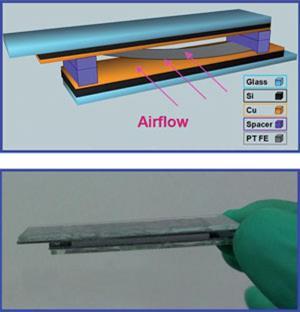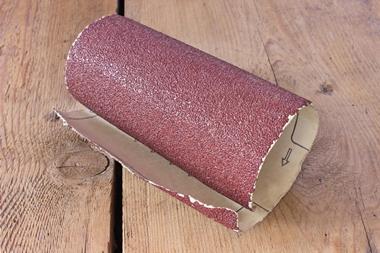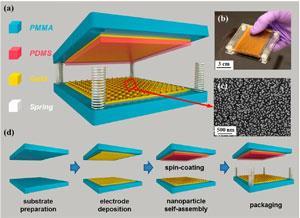
Shrinking triboelectric generators into today’s tiny gadgets limits their output. Friction between two films within the device generates the power but when miniaturised, the wear of these electrodes hinders this process.
The airflow induced triboelectric nanogenerator (ATNG) produced by Chenguo Hu, Jun Zhou and their teams from Chongqing University and Huazhong University eliminates this direct contact. Even gentle airflow vibrates the polytetrafluoroethylene film between the two copper electrodes of the ATNG to produce electrical energy. Variation of the film sizes and the electrode gap was optimised to give a stable 1.5mW output that could illuminate 46 green LEDs.
The team coupled the ATNG with a dye-sensitised solar cell. Addition of this solar cell allows the generator to harvest light and kinetic energy either independently or simultaneously.
Jr-Hau He, an expert in nanostructured photovoltaics at the National Taiwan University, highlights the technology’s potential: ‘such a smart device can work in the daytime to harvest solar energy and successively works at night to gather wind energy, truly realising an all-time self-powered device. Overall, this work shows an innovative combination of engineering and materials science.’
With this work having potential applications in personal electronics, medicine and environmental monitoring, Hu says the project will now be expanded. ‘We intend to design the generator so it is more practical for purposes within ventilation systems or as the only power source for portable devices.’









No comments yet